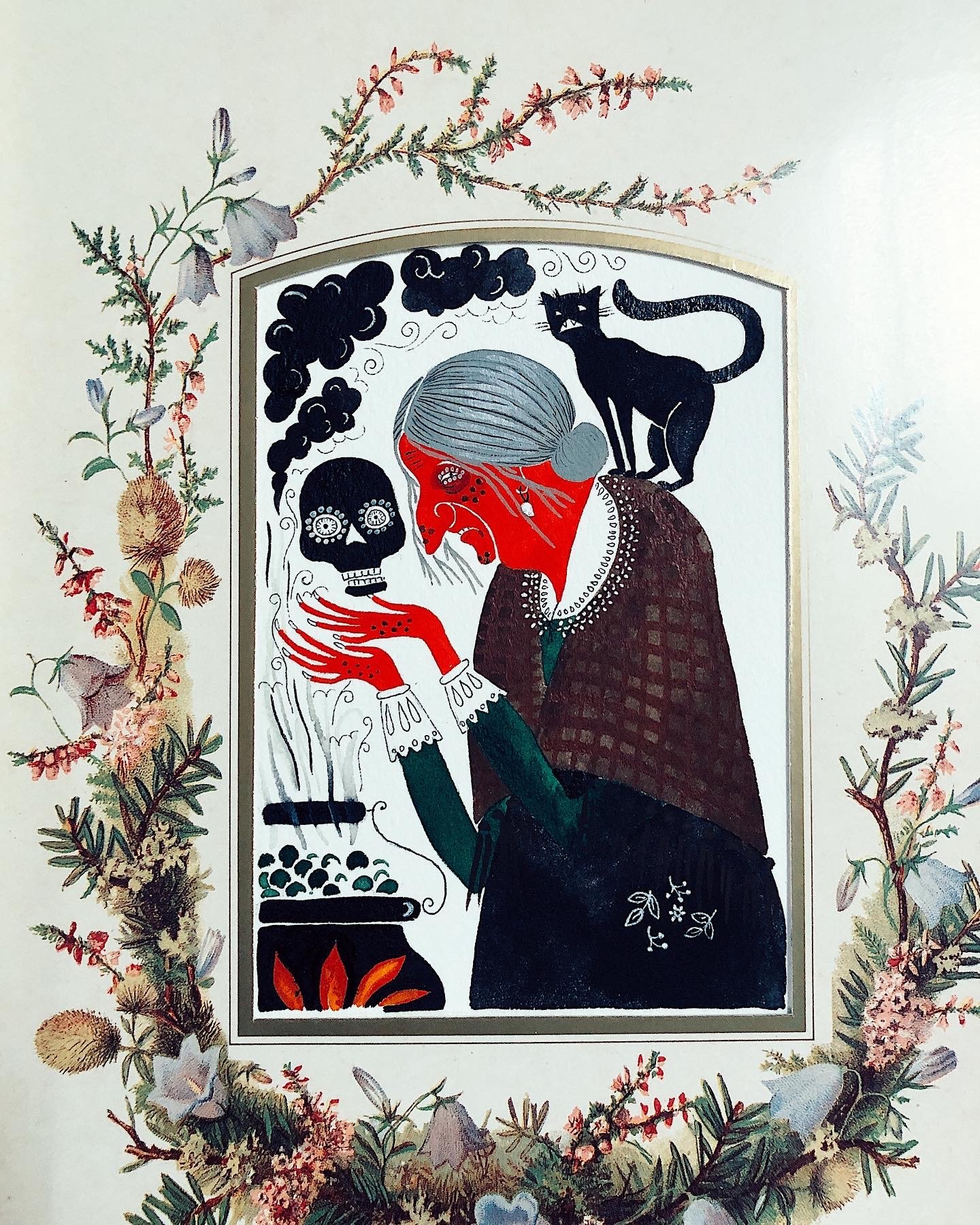Baba Yaga by Dinara Mirtalipova
The story of Baba Yaga is one of the most known in Slavic folklore, she appears in Russian stories, as well as Ukrainian, Belorussian, Bulgarian, Polish, Serbian and others. She is an old lady who lives in the dark forest in a house on chicken legs. She has incredible sense of smell and uses it to steal, cook and eat people, most likely children.
Many folklorists study Baba Yaga and argue over where she came from. This character appeared many centuries ago and tracking her true roots is a challenge. I’ve read many different versions, one that stood out to me is the ancient traditions of Finno-Ugric people.
It’s is believed that those people had a tradition that goes back to the paganism era when there were many ethnic religions. There was a group that believed in a ritual that was supposed to help them stay connected with their passed relatives. The ritual involved creating a doll (or baba - which means a women) out of sticks and dressing it in a fur coat called yaga. They would build her a “house” mostly out of wood. Since this house was only a symbolism and didn’t carry any functional purpose - it didn’t have any windows or doors. They also liked to raise it above the ground on sticks so that the animals would not get inside of it.
It’s interesting that with time the Baba Yaga character grew much softer. Her older mentioning were most vicious, but later in time the folklore grew softer and she became a wise Witch full of wisdom and knowledge.

